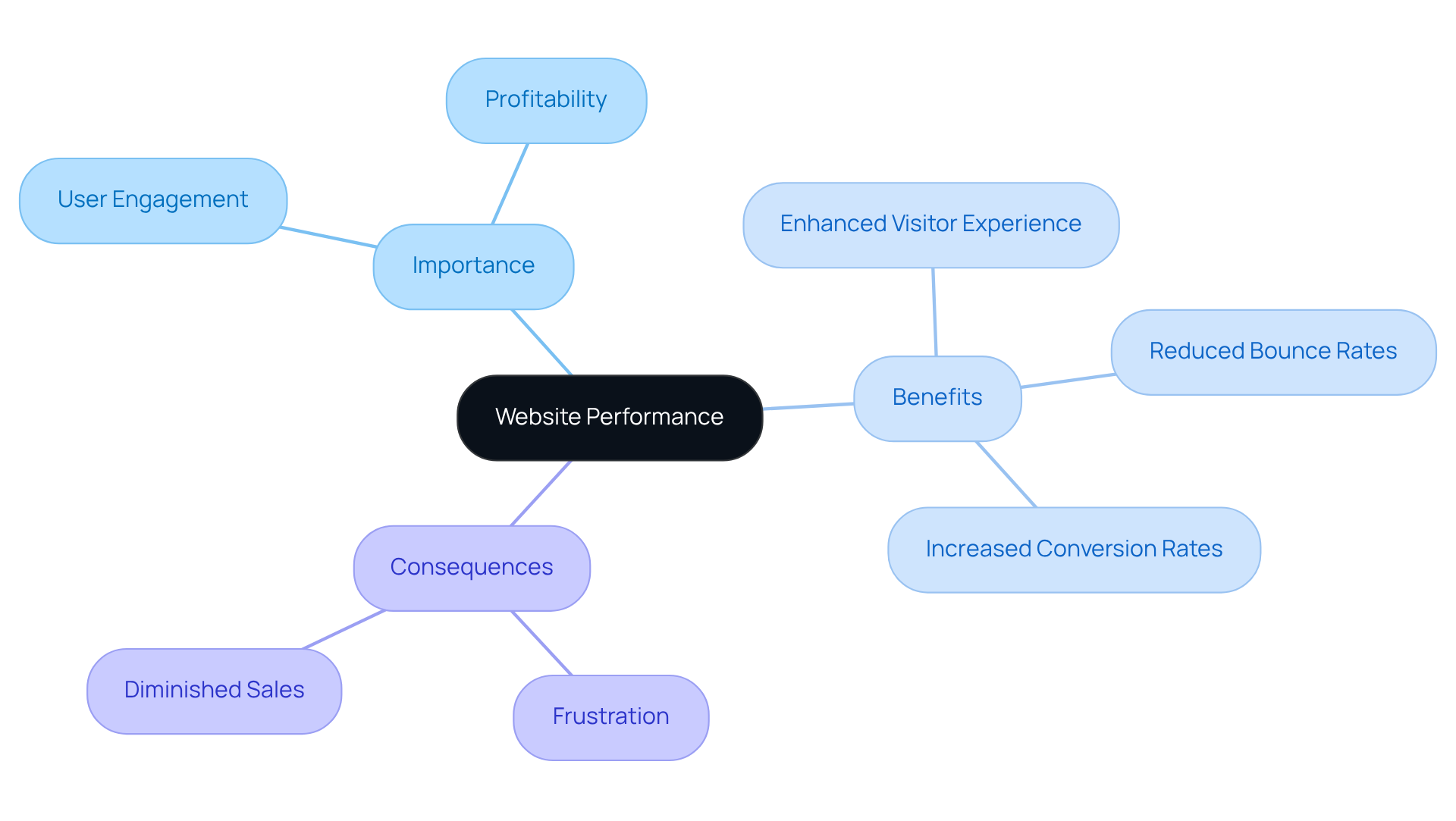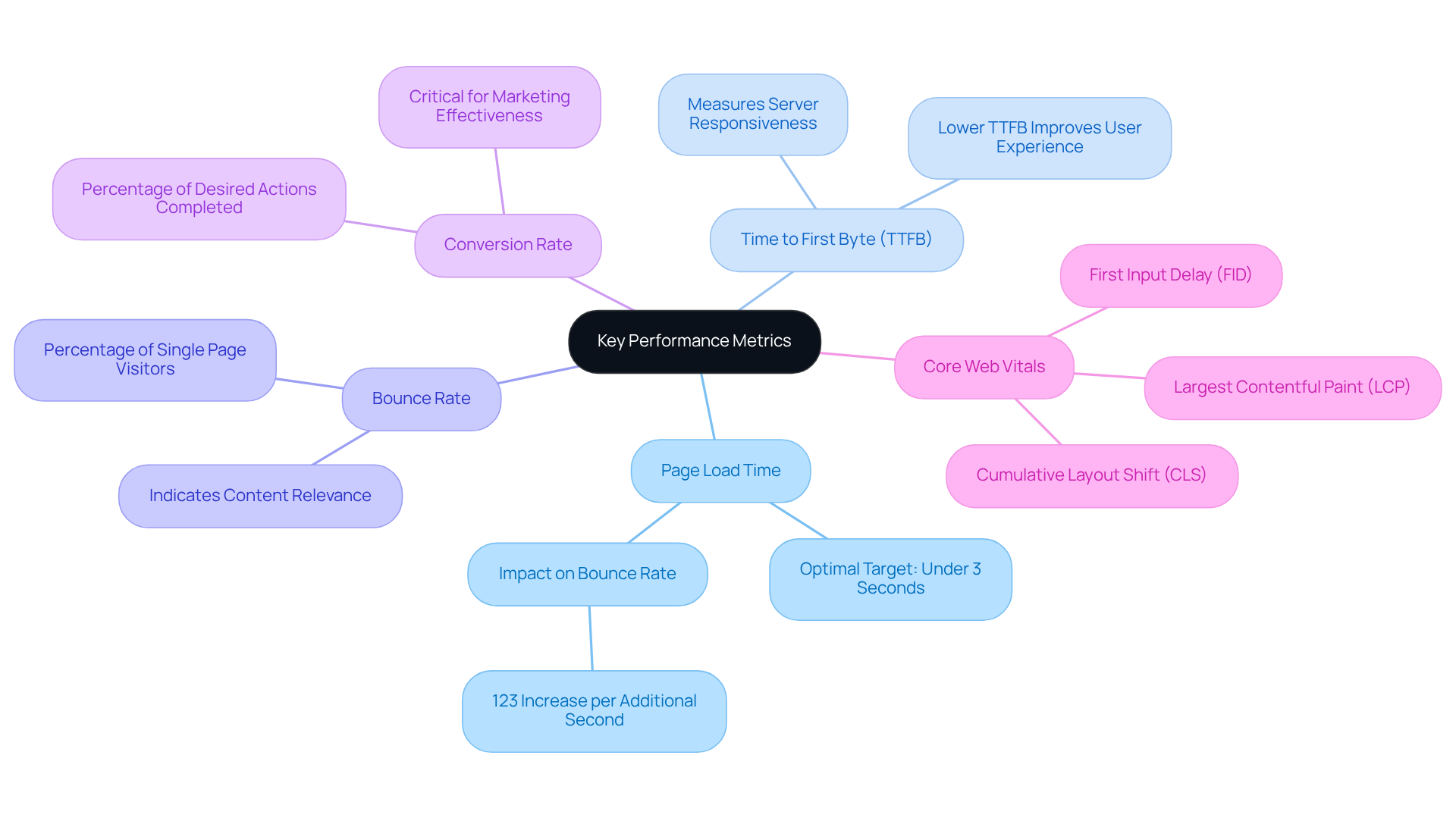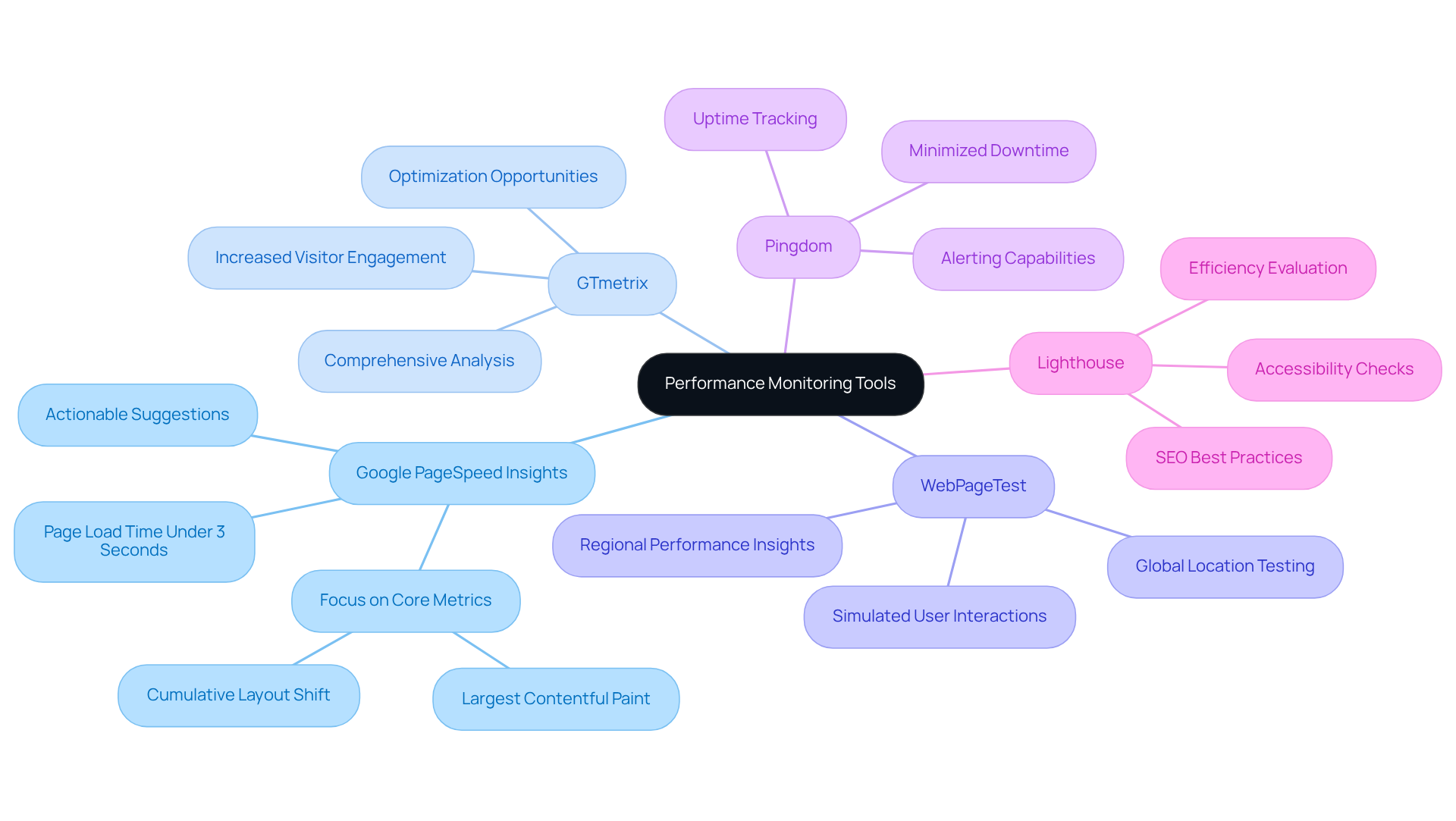
Overview
This article delineates four essential steps for executing an effective site performance check:
- Selecting a testing tool
- Running the test
- Analyzing the results
- Implementing recommendations
These steps are not merely procedural; they are vital in identifying key performance metrics, such as page load time and bounce rate. By understanding these metrics, website owners can optimize their sites, ultimately enhancing user experience and driving higher conversion rates. Embrace these steps to ensure your website performs at its best.
Introduction
In an online landscape where user expectations soar higher each day, the performance of a website can decisively influence a business's success. A swift-loading site not only captivates visitors but also significantly boosts conversion rates, making it imperative for brands to prioritize their online efficiency.
However, with a multitude of metrics and tools available, how can businesses effectively assess and enhance their site performance? This article presents a structured, step-by-step approach to conducting an effective site performance check, unlocking the potential for improved user engagement and profitability.
Understand Website Performance and Its Importance
is critical to how swiftly and effectively a platform loads and responds to visitor interactions. A not only enhances visitor experience but also and increases . In today's digital landscape, where users expect immediate access to information, slow-loading platforms can lead to frustration and diminished sales.
Understanding the importance of a is the first step towards optimizing your platform for and . Brands that prioritize effectiveness frequently observe and customer satisfaction.

Identify Key Performance Metrics to Analyze
To effectively analyze , it is essential to focus on key metrics that drive success:
- : This metric represents the duration required for a page to fully load, with an optimal target of under 3 seconds. Research indicates that each additional second of load time can increase s by up to 123%, significantly impacting potential sales.
- (TTFB): This measures the responsiveness of your web server. A lower TTFB signifies improved server efficiency, which is vital for retaining visitors and .
- Bounce Rate: This represents the percentage of visitors who leave after viewing only one page. A high bounce rate often indicates unsatisfactory results or irrelevant content, necessitating immediate attention to enhance engagement.
- : This metric reflects the percentage of visitors who complete a desired action, such as making a purchase. It is crucial for assessing the effectiveness of your site and optimizing marketing strategies.
- : These include Largest Contentful Paint (LCP), First Input Delay (FID), and Cumulative Layout Shift (CLS). These metrics assess loading efficiency, interactivity, and visual stability, respectively, and are vital for ensuring a seamless user experience.
that prioritize page load time have experienced significant improvements in conversion rates. By closely tracking these metrics, you can perform a to gain valuable insights into your site's functionality and identify key areas for enhancement.

Execute the Site Performance Check: Step-by-Step Process
To conduct a thorough , follow these essential steps:
- Select a : Choose reliable tools such as , GTmetrix, or WebPageTest. These platforms provide detailed insights into your site's metrics, assisting you in pinpointing critical areas for enhancement.
- Run the Test: Enter your website URL into the selected tool and initiate the evaluation. To achieve a comprehensive understanding of your site's effectiveness across diverse experiences, it is essential to perform a site performance check from multiple locations and devices.
- : Scrutinize the performance report generated by the tool. Concentrate on key metrics including , Time to First Byte (TTFB), and . Identify any metrics that fall short of recommended thresholds, as these can significantly impact and . For example, Google recommends that your site load in under three seconds, as 40% of users will abandon a site that exceeds this duration.
- Implement Recommendations: Based on your analysis, take . Common improvements include , minimizing JavaScript, and leveraging browser caching. Research indicates that optimizing load times can enhance conversion rates by up to 7%, underscoring the significance of these changes.
- Retest: After making adjustments, rerun the testing procedure to assess the impact of your optimizations. Compare the new results with previous metrics to measure improvement effectively. Regular benchmarking is vital, as a site performance check enables you to monitor progress and ensure sustained enhancements. For instance, a case study demonstrated that utilizing WP Rocket reduced page loading time from 6.5 seconds to 2.1 seconds, markedly improving engagement.
By methodically adhering to these steps, you can enhance your site's efficiency, resulting in greater user interaction and elevated conversion rates. Furthermore, tracking Core Web Vitals over a 28-day period can provide valuable insights into ongoing improvements.
![]()
Utilize Tools and Resources for Effective Performance Monitoring
To maintain optimal , consider utilizing the following :
- : This tool provides invaluable insights into your website's operation, offering actionable suggestions that can significantly enhance loading speeds and visitor experience. By focusing on metrics such as Largest Contentful Paint and Cumulative Layout Shift, it identifies critical areas for improvement essential for aiming to boost . Google emphasizes that maintaining page load time below 3 seconds is vital for enhancing both and conversion rates.
- GTmetrix: Renowned for its comprehensive analysis, GTmetrix assesses your webpage's speed and performance, delivering extensive reports that highlight optimization opportunities. Companies that utilize GTmetrix have reported substantial enhancements in responsiveness, which directly correlates with increased visitor engagement. As industry specialists note, 'A quicker platform results in more satisfied individuals and improved conversion rates.'
- WebPageTest: This tool allows you to conduct and browsers, providing a comprehensive insight into how your site performs under various conditions. By simulating actual user interactions, it helps identify regional challenges that could affect your audience. Monitoring from various locations is essential for detecting connectivity issues specific to particular geographic regions.
- Pingdom: A and functionality, Pingdom alerts you to any issues that may arise, ensuring your site remains accessible. Its robust alerting capabilities minimize downtime, which is crucial for maintaining customer satisfaction and trust. Businesses leveraging Pingdom have reported improved uptime and user satisfaction.
- Lighthouse: Integrated into Chrome DevTools, Lighthouse evaluates your website for efficiency, accessibility, and SEO best practices. Its recommendations can lead to significant improvements in user experience, making it an invaluable resource for DTC brands seeking to optimize their online presence. Case studies emphasize that implementing Lighthouse recommendations has resulted in measurable enhancements in .
By leveraging these tools, you can effectively conduct a site performance check over time, ensuring your website remains optimized for user engagement and conversion.

Conclusion
Enhancing website performance is not merely beneficial; it is essential for ensuring a seamless user experience and maximizing conversion rates. By prioritizing site performance checks, brands can significantly improve their ROI and customer satisfaction, ultimately fostering a more engaging online environment. The importance of optimizing website efficiency cannot be overstated, as it directly impacts user retention and overall business success.
Key insights from this guide emphasize the necessity of understanding and tracking vital performance metrics such as:
- Page load time
- Time to First Byte
- Bounce rate
- Conversion rate
Utilizing effective tools like Google PageSpeed Insights, GTmetrix, and WebPageTest facilitates a comprehensive analysis of a site's performance, allowing for targeted improvements based on data-driven insights. Implementing the recommended steps for conducting a thorough site performance check ensures that any shortcomings are addressed promptly, leading to enhanced user engagement and satisfaction.
Ultimately, investing time and resources into regular site performance evaluations is not just a technical necessity; it is a strategic imperative for any brand aiming to thrive in a competitive digital landscape. By committing to ongoing performance monitoring and optimization, businesses can create a robust online presence that meets user expectations and drives conversions, paving the way for sustained growth and success.
Frequently Asked Questions
What is website performance?
Website performance refers to how quickly and effectively a platform loads and responds to visitor interactions.
Why is website performance important?
Website performance is important because it enhances visitor experience, reduces bounce rates, and increases conversion rates. Slow-loading platforms can lead to frustration and diminished sales.
How does website performance affect user engagement?
A high-performing website improves user engagement by providing immediate access to information, which can lead to higher satisfaction and retention rates.
What are the benefits of optimizing website performance?
Optimizing website performance can lead to significant improvements in return on investment (ROI) and customer satisfaction for brands that prioritize effectiveness.
What can happen if a website has poor performance?
Poor website performance can result in frustrated users, higher bounce rates, and ultimately, decreased sales and profitability.
FAQs











